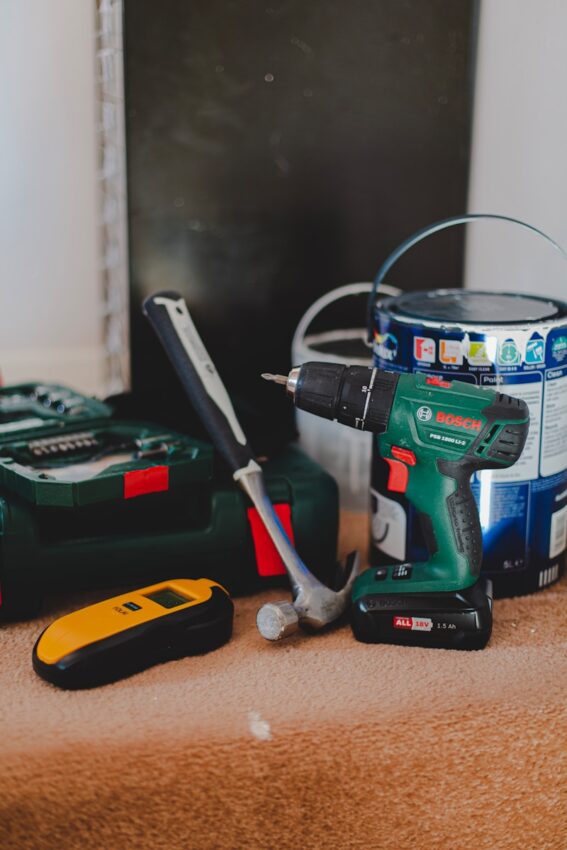DIY projects have become the present-day equivalent of carving out one’s niche and asserting individuality. From home renovations to crafting a bed frame out of pallet wood, the satisfaction of completing a project yourself is intoxicating. However, in our zeal for self-reliance, we often forget that some tasks should be left to the professionals. Whether it’s ensuring safety, ensuring precision, or avoiding a possible disaster, some jobs demand expertise that a YouTube tutorial cannot supply.

Safety First: A Non-Negotiable Priority
Safety is the most important factor to consider when deciding whether to call in the pros. Tasks involving electrical work or substantial structural changes carry inherent risks that go beyond the scope of an energetic weekend warrior. Tampering with electrical wiring without proper training is not just reckless; it can turn your house into a fire hazard. Likewise, tearing down walls to achieve your dream open-plan kitchen may lead to catastrophic structural failures if done incorrectly. In such cases, hiring a professional isn’t just a sensible choice, it’s a life-saving measure.
Astute DIY enthusiasts understand that while determination is admirable, it can never substitute for the necessary safety protocols adhered to by professionals. Each year, emergency rooms report cases from mishandled tools or overlooked hazards during “simple” home renovations. It’s a stark reminder that prioritizing safety isn’t merely advice—it’s a prerequisite. Consequently, it pays to invest in expert consultation or hands-on assistance where safety concerns arise.

Understanding Complexity: More Than Meets the Eye
There’s a paradox at play when it comes to tackling complex projects: the more involved a task appears, the simpler it often looks to the curious DIY enthusiast. Mistakes made at this stage can escalate costs far beyond the initial budget. Plumbing repairs, for instance, may appear deceivingly straightforward until you’re ankle-deep in water. You’ve suddenly introduced flood risks into your living room, where only a leaking pipe existed. The message here is clear—acknowledge the limits of your expertise.
Another less obvious aspect of complexity is the nuanced interplay of systems in a home. Take HVAC repairs, for example, where a failed fix might disrupt everything from air circulation to temperature regulation. When encountering heating or cooling issues, considering expert AC repair near you can prevent minor irritations from becoming major disruptions. These systems have underlying complexities best navigated by educated technicians, saving homeowners from inadvertently worsening the issue. Recognizing and respecting the intricate dance behind the scenes can paradoxically simplify decision-making: sometimes, the simplest choice is the most informed one.
Tools of the Trade: Specialized Equipment Matters
The illusion of savings in DIY is partly driven by the assumption that the only necessary ingredients are resourcefulness and elbow grease. Yet, tasks often require specific, costly equipment to complete effectively. Painting the living room walls is one thing. But grinding down a floor, installing detailed trim work, or tackling arduous landscaping tasks are efforts rich in opportunity for disaster without the requisite gear. Unless you intend to invest in equipment that could rival a small commercial contractor, it’s better to leave these jobs to those who have every tool at their disposal.
Part of the cleverness of professional work lies in knowing which tool is best for any specialized task. For instance, a seasoned arborist possesses not just know-how but an array of equipment suited for trimming high limbs safely. Meanwhile, specialized saws and planers might seem like an unwarranted investment for a one-time DIY project but could make all the difference in quality and craftsmanship. Thus, understanding the role of tailored equipment leads to better-quality results and long-term satisfaction.
Permits and Regulations: Navigating Bureaucracy
Before commencing any large-scale home improvement project, one must come to terms with the bureaucratic nightmare of permits and licenses. Not only is navigating these regulations a tedious and time-consuming task but overlooking particular permits can result in hefty fines. Professionals bring the know-how to secure the right documentation to ensure your project remains compliant with local rules and regulations. Involving a pro from the get-go ensures that you won’t be greeted by code enforcement after putting in tremendous effort.
One often overlooked facet of professional experience is familiarity with local codes and regulations. Regions have specific requirements for everything from plumbing and wiring to historical preservation standards. Skilled contractors stay abreast of ever-changing rules, providing a significant advantage over an ambitious homeowner’s weekend education session. Worst-case scenarios include the forced removal of unpermitted work, embarrassing and costly consequences that can be avoided with a contractor’s expertise.

Time Investment: The Hidden Cost
Underestimating the time required for a DIY project is one of the most common pitfalls. No matter how motivated you are, personal time is often not abundant. Stalled projects lead to half-baked outcomes, creating more issues than solutions. While hiring a professional requires a financial investment, it also means that the project’s completion becomes part of their timeline, not yours. The expertise and commitment of seasoned tradespeople wrap up ventures that can otherwise drag on indefinitely.
A frequent mistake is overlooking the domino effect of a delayed project: imagine rooms rendered unusable by incomplete renovations. Interruptions impact daily function and well-being, a risk that weighs heavily in the decision to engage experts. Professionals streamline schedules to minimize disruption, swiftly getting spaces back to normalcy. What the DIY route might save in money could cost dearly in comfort and convenience when timelines stretch beyond the expected.
Conclusion
There’s no denying the visceral thrill of DIY success, whether you’re installing shelves or painting a mural. Yet recognizing the limitations of novices is key to maintaining sanity, and sometimes, safety. Some ventures should be approached with caution and support, with professional intervention as a justifiable step, not a last resort. After all, ensuring home projects are done right the first time saves resources, time, and, most importantly, guards against potential disasters. So, the next time you look at a project, assess the complexity and risk. Sometimes putting your ego aside is the wisest DIY move of all.
